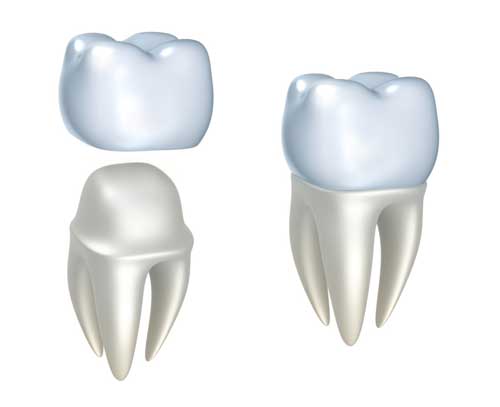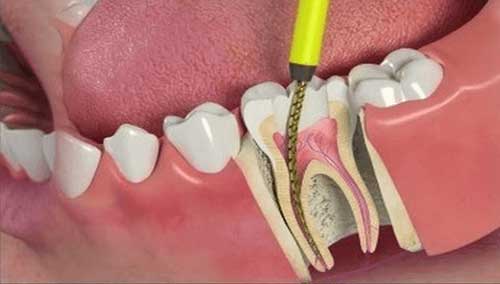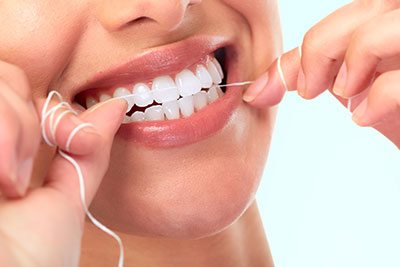Why CEREC is Right For You

CEREC is the short term for Chairside Economical Restoration of Esthetic Ceramics, or CEramic REConstruction. This advanced technology uses computer aided design and manufacturing to quickly take dental impressions and generate perfect, custom fitted ceramics. This means if you are up for a dental crown, filling, inlay or onlay procedure, you can get everything done in one trip to the dentist office. Traditionally, multiple trips need to be made to complete the placement of a dental crown. Now, instead of sending dental impressions to a lab and waiting for the final, permanent crown before fitting, we at East Mountain Dental can create and place a crown in a single day. CEREC technology saves you time and guarantees great results. The CEREC Process Once your tooth has been prepped for the fitting of a ceramic restoration, which is done by filing and shaping the tooth, the CEREC process allows our team to use digital impressions to make a mold for the restoration. Digital impressions are more comfortable and more accurate than traditional impressions that are made with plaster. The mold is then used to create the restoration from a single block of solid ceramic materials. CEREC technology can manufacture a custom dental crown in as little as 90 minutes. The restoration is then fitted and bonded into place. Additional CEREC Technology Benefits It is not only the convenience of CEREC technology that makes it so great, but the restorations also look after your comfort and appearance. Here are 4 ways in which CEREC technology gives you the best possible restoration. CEREC technology allows people to avoid the stage of traditional restoration treatments that require patients to have a temporary restoration fitted, instead of having their permanent fixtures fitted right away. While temporary restorations fulfil the basic role of protecting teeth, they have many downsides, such as chewy and sticky foods easily damage these temporary fixes. Some people also experience discomfort while having temporary restorations removed before their permanent ones are fitted. The lifespan of CEREC restorations is longer than restorations made with traditional methods, meaning they will look better for longer. An impressive 95.5 percent of crowns made with CEREC technology survive for at least nine years after they have been fitted. The tooth shade of CEREC ceramic materials can be precisely matched to the color of your natural teeth, rendering the restoration virtually unnoticeable. The accurate fit of CEREC restorations are less likely to cause sensitivity, as most cases of sensitivity arise from restorations that do not fit correctly. Some patients also experience sensitivity during the period when wearing temporary restorations. As these are not necessary with CEREC restorations, the technology removes another possible source of sensitivity. With CEREC technology, patients enjoy the advantages of long-lasting, comfortable, well-fitting crowns, fillings, inlays or onlays. Ask our team at East Mountain Dental if CEREC technology can be used in your next restoration procedure.
What is Endodontics?

Endodontics is the branch of dentistry that focuses on the care, diagnosis and treatment of dental pulp and tissues surrounding the roots of a tooth. What is Dental Pulp? Dental pulp sits inside your tooth, covered by layers of specialized bone, connective tissue and enamel. Our dental pulp is filled with blood vessels and nerves that connect the tooth through its roots to the rest of the mouth. Why is Endodontics Important? It is important to keep the dental pulp of a tooth healthy because it is responsible for the blood flow to the tooth, the creation of one of the layers of the tooth (dentin), and provides a sensory function, such as a reaction to differences in temperature. The infection and decay of dental pulp can lead to severe pain and the death/removal of the tooth. What Procedures Does an Endodontist Handle? Endodontists perform root canal treatments, address traumatic dental injuries, and place dental implants. The real goal is to save your natural teeth, but if this is not possible, an endodontist will look for the best course of action to preserve and restore your dental health. When To See An Endodontist? If you’re experiencing tooth pain, have injured your tooth, experience extreme sensitivity to hot or cold food items, and/or have swelling around the teeth, gums or face, then you should make an appointment to see your dentist. Your dentist may then refer you to an endodontist for specialized treatment. Trust in East Mountain Dental’s Endodontics At East Mountain Dental, we are able to evaluate and treat your endodontic-related problems. By saving your tooth, we can help you keep your smile as natural as possible, which allows you to continue eating your favorite foods and maintain your overall dental health.
What is Dental Bonding?

What is Dental Bonding? Dental bonding is the application of a tooth-colored composite resin, much like a plastic, to the teeth. It is applied to repair decayed, chipped, fractured or discolored teeth. Bonding can be done in a single dentist visit as it does not need to be manufactured in a laboratory or need a customized mold. What is Dental Bonding Used For? It is an easy and inexpensive cosmetic dental procedure, which can improve the appearance of discolored or chipped teeth. It is also used to fill in gaps between teeth, and can be used to modify the shape or length of teeth for cosmetic purposes. The composite resin can be shaped and polished to match the surrounding teeth for the perfect finish. Dental bonding has also been used as an alternative to amalgam or metal fillings since the composite is able to blend in with the rest of the patient’s natural teeth for a more appealing smile. Another use is the application to protect a portion of a tooth’s root that has been exposed as a result of receding gums. How is Dental Bonding Applied? Anesthesia is not necessary in this process unless the bonding is being used to fill a decayed tooth. There is no extra preparation that needs to be done before this dentist appointment. In the appointment, your dentist will use a color guide to select the composite resin that will match the natural color of your teeth. The dentist will then slightly etch the surface of the tooth to make its surface rough and then coat the tooth in a conditioning liquid. This is so the composite resin will stick to the tooth. When the tooth is prepared, the tooth-colored, putty-like resin will be applied. The resin is molded and smoothed into its proper shape. An ultraviolet light or laser is then used to harden the material. Your dentist will further trim and shape the bonding once it has hardened. The tooth will then be polished until the bonding matches the natural sheen of your teeth. The whole process can take between 30 minutes to an hour, depending on the amount of work that needs to be done. If you’re having more than one tooth done, you may need to schedule different appointments. What to Avoid After a Dental Bonding Procedure Substances, such as tea, coffee and cigarette smoke can stain the dental bonding resin and should be avoided to maintain the resin’s original color. To prevent or minimize stains, avoid eating or drinking foods that can stain for the first 48 hours after any composite procedure. Patients should continue to brush their teeth twice a day, maintain a good oral hygiene regime and have their teeth cleaned regularly by a dental hygienist to ensure the dental bonding lasts as long as possible.
The Fuss about Floss

Every dental hygiene article will tell you that an adequate oral hygiene regime includes brushing your teeth twice a day and flossing at least once a day. However, according to data from the latest National Health and Nutrition Examination Survey, which was compiled in 2016, it states 32.4 % of American adults over the age of 30 never floss. The results also showed that 37.3 % of these adults floss but not everyday; and only 30.3 % floss on a daily basis. Other interesting findings include more men failed to floss when compared to women and low-income participants are less likely to floss than those in higher income brackets. But why do these statistics matter? What is the fuss about flossing? For one thing, these statistics are an indicator of why the Center of Disease Control finds a high prevalence of gum diseases in America, especially in the Southern States. What is gum disease? Gum disease in its most common form is called gingivitis. The symptoms include tender and swollen gums that bleed easily when brushed. Gingivitis can be caused by the failure to maintain oral hygiene. When someone neglects their oral hygiene, food particles can get stuck between the teeth and mix with saliva and bacteria in the mouth. This mixture forms plaque, which can harden into tartar that can not be removed through normal toothbrushing. The bacteria in plaque and tartar create acids that eat into our tooth enamel and create holes called cavities. Bacterial infection and tooth decay fester in cavities and can affect the gums, causing gingivitis. If left untreated, gingivitis can develop into a more advanced stage of gum disease, which can cause nearly irreversible damage to the gums, teeth and jawbone. Flossing ensures that food particles do not get stuck between our teeth, where our toothbrush can’t reach, and cause cavities. Preventing gingivitis is also a preventative measure against a number of other health issues, such as respiratory diseases, which can be caused by bacteria in the mouth affecting the lungs. Tips for flossing: Floss before bedtime as this is when you will get the best result as it is after you have eaten for the day. Start with 18 inches of floss and work it around each middle finger until you have around two inches. Hold the floss taut between your thumb and index finger and gently move it up and down between your teeth. Carefully glide the floss around the base of each tooth, going beneath the gum line. Use new sections of floss for each new tooth. Remove floss from your teeth by mimicking the same up and down motion.
